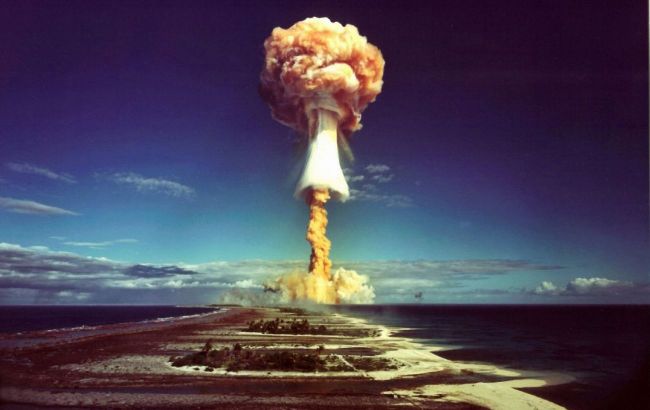Nuclear explosions in Soviet-era Ukraine - What really happened?
 Two nuclear bombs were detonated in Ukraine during Soviet times (photo: Getty Images)
Two nuclear bombs were detonated in Ukraine during Soviet times (photo: Getty Images)
During the Soviet era, two secret nuclear explosions were carried out on the territory of Ukraine. These events were hidden from the public for decades. They were industrial explosions with the code names "Fakel" and "Klivazh" within a large-scale Soviet program called "Peaceful Nuclear Explosions," which included 124 detonations across the entire USSR. Here's what is known about the Soviet nuclear explosions on Ukrainian territory and their consequences.
Project Fakel
These dangerous experiments aimed to address various industrial challenges, but their environmental and human consequences remained classified.
The first industrial nuclear explosion in the Ukrainian SSR, code-named "Fakel" (torch), occurred on July 9, 1972, in the Kharkiv region, 3 km from the village of Khrestyshche in Krasnohrad district.
The cause was an emergency gas condensate blowout while drilling a new well. The gas pressure reached about 400 atmospheres, leading to the deaths of two engineers who were thrown from the upper platform of the drilling rig.
Authorities decided to use a nuclear explosion to suppress the gas "torch" (gusher). A nuclear device with a 3.8 kiloton yield was placed 2,483 meters deep.
Сonsequences
Twenty seconds after the explosion, a powerful gas geyser mixed with rock burst from the crater around the well, followed by a mushroom-shaped cloud.
The experiment failed—the explosion did not stop the gas blowout. The gusher was extinguished over several more months using standard methods.
Residents returned to their homes just 30 minutes after the explosion, but many houses had broken windows and damaged walls. Test animals in restricted zones died. Information about radioactive contamination was classified.
Project Klivazh
The second so-called peaceful nuclear explosion, known as "Object Klivazh," occurred on September 16, 1979, in the Donetsk region at the "Yunyi Komunar" (Yunkom) mine in the city of Bunhe (then Yunokomunarivsk).
The stated purpose was to reduce sudden releases of coal and gas during mining to improve miner safety.
A nuclear device with a yield of 0.3 kilotons was placed in a borehole at a depth of 903 meters—about 50 times less powerful than the bomb dropped on Hiroshima.
Сonsequences
Coal continued to be extracted from the mine for another 23 years. Official reports didn't mention potential radiation impacts on workers or the environment.
However, the area now raises serious concerns. The explosion created an underground "glass capsule" at a depth of 900 meters that contained 93% of the radioactive products.
In 2018, occupation authorities in Donetsk halted drainage work at the mine, raising the risk of the Klivazh site flooding.
Scientists have already recorded that the total concentration of radionuclides in aquifers within 5 km of the mine reaches 20–34*10³ Bq/kg, indicating that contaminated water has reached drinking water levels.
This poses the risk of a large-scale environmental disaster, potentially contaminating the basins of the Siverskyi Donets and Kalmius rivers and the Azov Sea.
Cost of secrecy: Lessons from peaceful nuclear explosions
The stories of Fakel and Klivazh are stark examples of how the Soviet government neglected safety and concealed information about potentially hazardous experiments.
These "peaceful" nuclear explosions, conducted without proper public notification or long-term monitoring, became hidden ecological time bombs.
Revealing these facts highlights the importance of access to truthful information, learning from the past, and the need for international oversight of such technologies to prevent future tragedies.
Earlier, we reported that the Kremlin believes that "the USSR still exists."
Sources: articles from World Nuclear, CEOBS, Jamestown, and Wikipedia.

